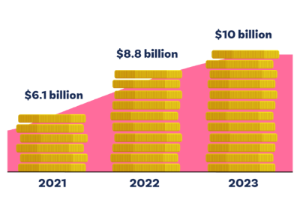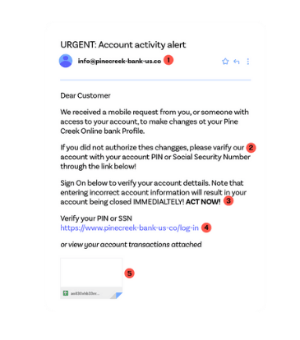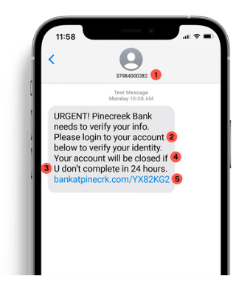

Protect Yourself from Frauds and Scams
Every day, people fall victim to fraudulent emails, texts, calls, and payment app requests from scammers pretending to be their bank. That’s phishing.
And in this time of expanded use of online and mobile banking, the problem is only growing worse.

How bad is it?
Consumers lost over $10 billion from phishing and other scams in 2023 — a 13.6% increase since 2022.
Online scams aren’t so scary when you know what to look for. And at Hana Bank USA, National Association, we’re committed to helping you spot them as an extra layer of protection for your account.
So what can you do?
- Learn to spot the red flags of phishing scams.
- Defend your accounts against future threats.
- Take action if you think you’ve been a victim to a scam.
Phishing emails
Watch for these red flags:
- Suspicious email address
- Typos or unusual grammar
- Urgent language
- Hyperlinks — never click them
- Attachments — never open them

Phishing Texts
Watch for these red flags:
- Unusual phone numbers —your bank will only text from a 4-5 digit number
- Hyperlinks — your bank will never ask you to log into your account by texting a link
- Odd grammar
- Scare tactics and urgent language
- Texts asking you to open a link

If you believe you’ve been scammed, take these next steps:
- Contact your bank
- Change your passwords and visit IdentityTheft.gov.
- Report the scam to the FTC at ReportFraud.ftc.gov.
- If you lost money, file a police report.

